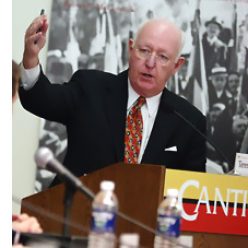By Terence Smith
I first set foot in Israel in May, 1967, ( a mere 57 years ago,) a newly-minted foreign correspondent for The New York Times, arriving just days before the start of the Six Day War.
Israel-the-nation was 19 years old (I was barely 10 years older,) and was a vastly different place with vastly different attitudes and politics than Israel today.
Israel then was largely liberal, progressive and proudly socialist. The Labor Party was in power and would rule for 40 years. The left-of-center Kibbutzim, or collective settlements, embodied the spirit of the nation. Neckties were rarely worn by political leaders; saying “thank you” to a waiter was dismissed as pathetically bourgeois; the national labor union, the Histadrut, represented most of the population and guided its politics.
Israel today is something else: largely right of center, with ultra-conservative, aggressive ministers in the government holding the keys to Prime Minister Bibi Netanyahu’s increasingly shaky kingdom. The ultra-orthodox population has grown to nearly 13 percent of the total and wields significant political power. Labor is now the smallest party in the Knesset, with just four seats out of 120. The Israeli left, dominant for decades, has withered away.
Of course, Israel, now 9.5 million strong, is not now and never will be a monolith. The old cliche: “two Israelis, three opinions” is still true. You can find liberal and progressive Israelis demonstrating on Saturday nights against the Netanyahu coalition and in support of the families of hostages still held in Gaza. They are demanding a ceasefire, release of the remaining hostages and new elections as soon as the firing stops.
Meanwhile, the nearly three million Palestinians clinging to their lands on the occupied West Bank are under daily assault from out-of-control Israeli settlers. Gaza and Hamas may dominate the headlines, and the risk of full-scale war with Hezbollah on the Lebanese-Israel border looms large, but the real tinderbox in my view, the site of a looming third Intifada, is the West Bank.
In the Six Day War in June, 1967, which I covered for The New York Times, Israel seized the West Bank from Jordan, the Sinai from Egypt and much of the Golan Heights from Syria. All or portions of the latter two were returned in negotiations, but not the West Bank. The so-called Green Line, which separates Israel proper from the West Bank, remains the effective border today.
From 1967, when Israel immediately annexed Jordanian East Jerusalem, to today, a significant and increasingly influential portion of the Israeli leadership and public has publicly acknowledged its intention to absorb the occupied West Bank.
The official Israeli (and U.S.) policy is that the status of the West Bank is a matter to be negotiated between the parties. For many Israelis, and today members of the Cabinet, it is not. The official policy of openness to a negotiated solution is just that: official policy. It is increasingly not the reality. The reality is that more and more Israelis intend to keep control of the West Bank and its residents and to block the formation of an independent Palestinian state.
Beginning with the late Prime Minister Menachem Begin in 1977 and continuing to the Netanyahu government today, the notion of giving up control of the West Bank is mere lip service, a rhetorical convenience, a sop to the U.S. and Western European nations that embrace the two-state solution as the only solution.
The possibility of an Israeli withdrawal from most of the West Bank was briefly real during the Oslo Accords in 1993, and again in 2000 at a Camp David summit, but withered away in disagreement.
In recent years, and especially since the savage Hamas attacks of October. 7, 2023, as Israel has moved to the right politically, more and more Israelis are willing to admit to the world and to themselves that they are flatly opposed to Palestinian statehood in the West Bank. They cite security, historical tradition and religion as justification for denying sovereignty to the Palestinians who live on the West Bank.
Bezalel Smotrich, the hard-right, ultra-nationalist Finance Minister in the Netanyahu coalition, said as much recently in a taped speech to a group of Israeli settlers in the West Bank. The government, he said, is engaged in a stealthy effort to irreversibly change the way the West Bank is governed, to cement Israel’s control over the area and its people, without admitting that it is formally annexing it.
Mr. Smotrich’s view of the future of the West Bank is no secret, but having a government minister and key member of the ruling coalition say it publicly was a moment. Nor, incidentally, is it any surprise to the more sophisticated Palestinians on the West Bank. They have known and believed for years that Israel is slowly and inexorably absorbing the area and has no intention of withdrawing from its control.
So, there it was, in public and on the record and taped at an event that Mr. Smotrich’s aides said was no secret. Tens of thousands of Israelis disagree, of course, and regularly demonstrate their disagreement, but they are not in the Netanyahu government. Mr. Smotrich is.
TERENCE SMITH, a journalist and author, covered Israel for The New York Times, for five years. His memoir is “Four Wars, Five Presidents, a Reporter’s Journey from Jerusalem to Saigon to the White House.”
